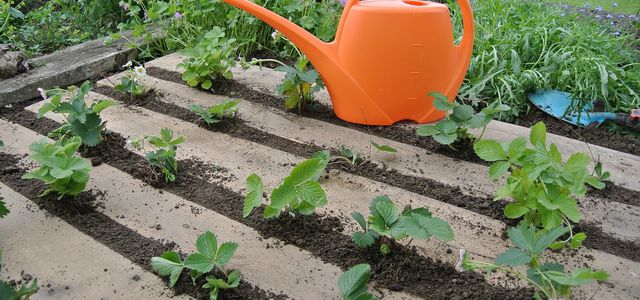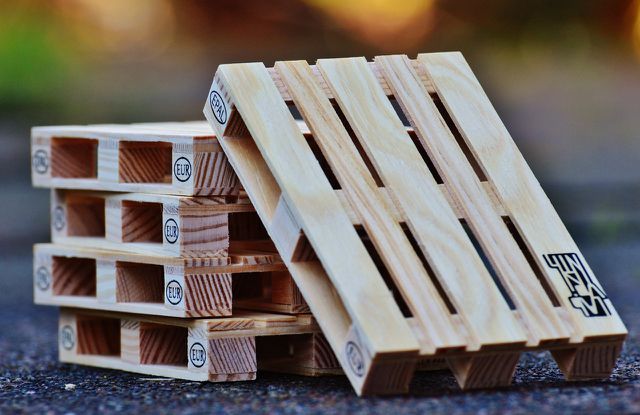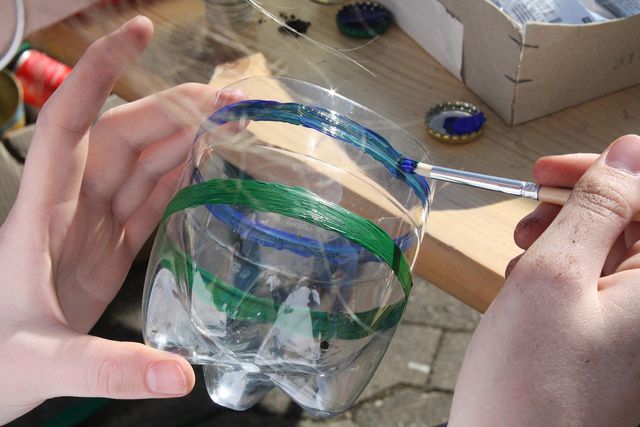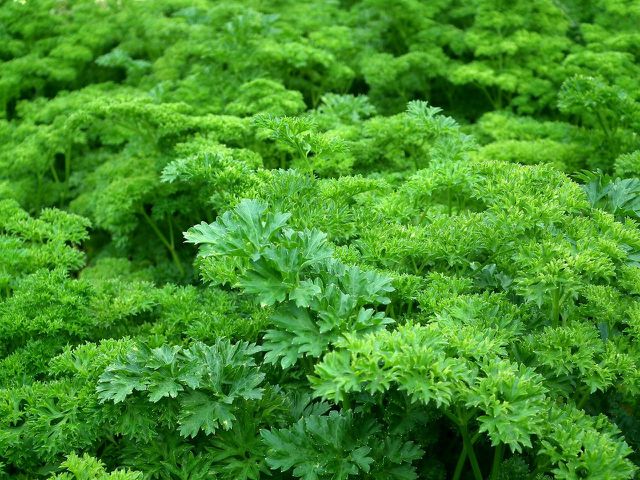
You have little space, but you still do not want to do without a garden? Then a vertical garden might be the idea for you.
When can you create a vertical garden?
Your garden is very small or you only have a balcony? Or you want to give a gray wall more greenery? Then a vertical garden is just the thing for you. Instead of flat beds and flower boxes, you simply build your garden upwards. You can also add greenery to your living room with a vertical garden.
The advantages of a vertical garden:
- Greenery
- privacy screen, depending on the placement also shade or wind protection
- space-saving
- Self-sufficiency on a small scale
- improvement of air quality
- Relaxation and stress reduction through greenery
You can buy a vertical garden as a ready-made – and usually rather expensive system. With a few tools from the hardware store, you can also build your own vertical garden.
Contents
A vertical garden from a pallet

A popular variant of the vertical garden is the homemade version from a pallet.
For this you need:
- a pallet
- burlap from jute sacks (you can get it at coffee roasting shops or at the hardware store, for example)
- a large stapler, preferably an electric one
- a sturdy garden foil, e.g. pond liner
- soil
- seeds or young plants
- a pair of scissors
Here’s how to build your vertical pallet garden:
Attach the burlap to the top of the pallet from the inside using a stapler.
Then attach the pond liner to the bottom and outside of the pallet by stapling it to the wood. Note: One outer side remains free, here you will fill in the soil later. The top of the pallet is now lined with burlap, all other sides except one narrow side are covered with pond liner. Also make sure that the pond liner is as tight as possible and that there are no gaps.
Fill the pallet over the open side with soil.
Cut slits in the burlap through which you will place the seeds or plants in the soil.
Finally, set the pallet up with the open narrow side facing up and the burlap-covered side facing forward. Check how securely the pallet is standing and, if necessary, secure it to a railing or wall with twine or screws.
Extra tips:
You can also poke a few holes in the bottom of the liner (i.e., opposite the open side) and fill the bottom of the pallet with a layer of gravel first to allow water to drain away.
At the bottom, plant more plants that can handle a lot of water, because the bottom is where most of the water collects.
Leave your vertical garden at an angle or on the ground for the first couple of weeks until the plantlets have found their footing and taken root. After that, you can put it upright.
A vertical garden from other materials

A vertical garden does not have to consist of a pallet. Here are other interesting alternatives:
Take old plastic bottles and attach them horizontally to a wall or vertical wooden board with nails and screws. Cut a rectangular opening in the top of the bottles and fill them with soil. Tip: You can also attach the bottles vertically and cut off the top.
- Attach jars, such as jars of weck, to a pallet or wooden trellis as flower pots.
- Place flower pots in old bags and fill them with soil. You can hang the bags one on top of the other on the wall or attach them to a wooden board or pallet.
- Use old poles, boards, or pallets to build a framework to which you can attach pots, bags, bottles, or anything else you can think of.
- Build or buy narrow shelves and simply place your pots on the shelves.
- From flower pots you can build a kind of “flower stairs” by stacking them. You will need pots of different sizes. Place the largest pot on the bottom and fill it with soil, place the next smaller pot on top, fill it again and so on. Especially well you can stack elongated flower pots crosswise on top of each other.
- Old rain gutters can also be screwed to a wooden board and planted. To cut them to size, however, you need a saw with which you can saw the metal.
- Fruit crates or wine boxes can also be turned into small beds.
- Plant an old shoe rack.
- Use an old ladder as a support.
Important: When building, think about how you can best water your garden. Especially indoors you need a device to catch dripping water so that your soil is not flooded.
These plants are suitable for your vertical garden

hen planting, there are a few things you should keep in mind:
Have you chosen a sunny or shady location for your vertical garden? Some plants need a lot of sun, others like partial shade to shade.
How much maintenance do you want to put into the garden? Watering-intensive plants need more care, for example.
Which plants get along well with each other, and which should not grow next to each other?
Are your plants allowed to climb, or are they better left in place?
If you want to build your garden for greenery and ornamentation only, succulents, for example, work well. However, these only grow a little and therefore do not provide a large-scale, dense greenery.
Otherwise, these plants are suitable:
- Ferns
- Climbing plants
- flowering perennials such as pansies or the like
- Mosses
With many flowering plants you also make bees and other insects happy – and have it colorful on your balcony.
A vertical garden can also be turned into an edible garden. In this case, plants that do not develop deep roots are particularly suitable:
- Herbs
- Cress
- Lettuce
- Radishes
- Strawberries
Care and other tips
A vertical garden usually doesn’t need any more care than a “normal” garden. You may only need to water the upper tiers more often if the water drains down fairly quickly. You may need to support your plants with fertilizer. Be sure to use organic fertilizer.
If you want to water your garden more professionally, you can put a hose through the pipe or pallet before you add the soil. Poke holes in the hose beforehand – you can easily water the plants over it.
If you have an indoor garden, you must regularly check that it is watertight, so that the walls and soil are not damaged by water leaks.
In the winter, you can either remove annuals that are not hardy and replant your garden in the spring. Or you can choose plants that are frost resistant or construct your garden so that you can take individual pots and containers indoors.
Have fun building!

